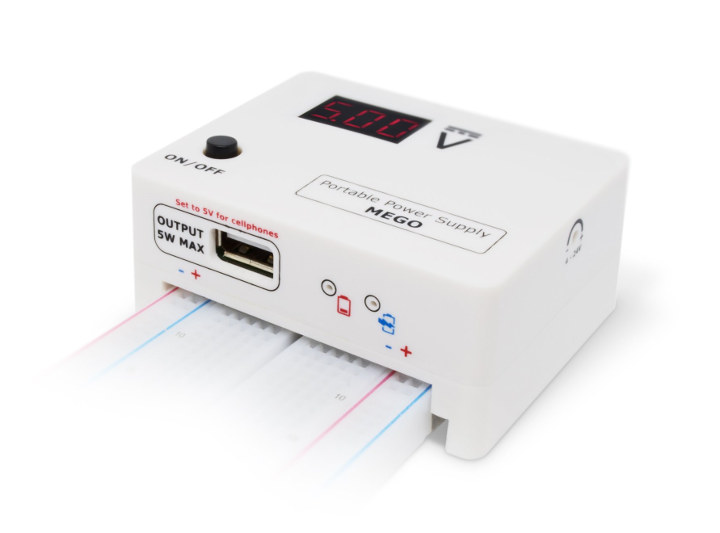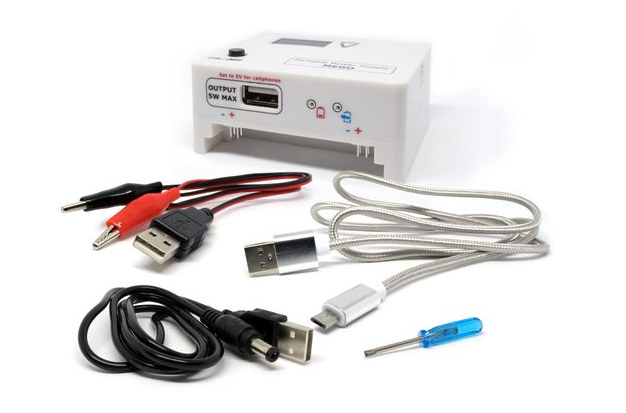Breadboard power supplies like MB102 have been around for years, and some even designed a variable power supply for breadboards, but EVO-IN-MOTION MEGO looks much neater as a fully enclosed power supply, 4 to 24V output, fitted with a LiPo battery, and a display to show current voltage.
MEGO enabled on-the-go breadboard projects without any cables for the power supply. Just connect the power supply, and you’re good to go with power delivered from the built-in battery.
 MEGO power supply specifications:
MEGO power supply specifications:
- Output Voltage – 4-24V DC
- Maximum Power – 6W
- Safety – Overload protection; short circuit protection
- Typical Power Efficiency – 88%
- Voltage Display Accuracy – <1%
- Ripple Voltage – <1%
- Load Regulation – 270mV
- Battery – 7.4Whs (2,000 mAh @ 3.7V)
- Misc – Power button;, adjust knob for output voltage; low battery and charging LEDs
- Dimensions – 73 x 59 x 32 mm
- Weight – 100 grams
- Temperature Range – Operating: -15 to 45 °C; storage: -20 to 50 °C
MEGO ships with other cables that extend the use of the power supply to other boards (USB to alligator clips and USB to DC jack cable) and it can also act as a emergency power bank to charger mobile devices via the USB cable that comes with your smartphone, just remember to set voltage to 5V before doing so, or it may fry your phone. A micro USB cable is provided for charging the battery and a small screwdriver to adjust the voltage. You’ll find more details in the user manual.
 MEGO launched on Kickstarter and Indiegogo last year, but it’s now sold on Tindie for $40 plus shipping.
MEGO launched on Kickstarter and Indiegogo last year, but it’s now sold on Tindie for $40 plus shipping.

Jean-Luc started CNX Software in 2010 as a part-time endeavor, before quitting his job as a software engineering manager, and starting to write daily news, and reviews full time later in 2011.
Support CNX Software! Donate via cryptocurrencies, become a Patron on Patreon, or purchase goods on Amazon or Aliexpress




